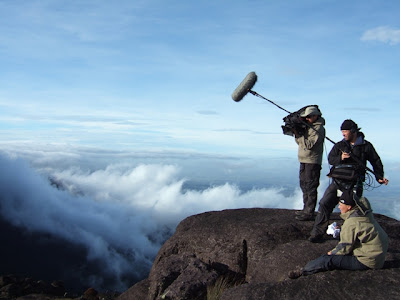Mount Roraima: also known as Tepuy Roraima and Cerro Roraima; Portuguese: Monte Roraima is the highest of the Pakaraima chain of tepui plateau in South America. First described by the English explorer Sir Walter Raleigh in 1596, its 31 km2 summit area is defended by 400-metre-tall cliffs on all sides. The mountain includes the triple border point of Venezuela, Brazil and Guyana. Mount Roraima lies on the Guiana Shield in the southeastern corner of Venezuela's 30000 km2 Canaima National Park forming the highest peak of Guyana's Highland Range.
Mount Roraima






















































